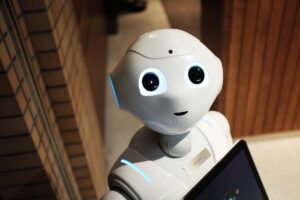The most interesting and promising technological developments of the twenty first century are quantum computing and AI. Both have the potential to disrupt a variety of industries, from cybersecurity and transportation to healthcare and banking. In this essay, we’ll examine the relationship between quantum computing and artificial intelligence and talk about how these two fields might cooperate to usher in a new era of innovation and development.
In a Nutshell
- Using quantum bits (qubits) rather than conventional bits, quantum computing processes data according to the laws of quantum physics.
- The superposition property of qubits allows quantum computers to do several operations at once, giving them a huge speed advantage over classical computers.
- The creation of computer systems capable of doing activities that typically require human intelligence is known as artificial intelligence.
- While general AI aspires to complete any intellectual work that can be completed by a human being, narrow AI (specific AI) is made for specialized activities.
- Given that AI can handle the enormous volumes of data that quantum computing requires and that AI algorithms may optimize and enhance quantum computing algorithms, the marriage between quantum computing and AI can realize its full potential.
Quantum Computing: What Is It?
Quantum computers use quantum bits, or qubits, as opposed to conventional computers, which use bits to represent information as 0s or 1s. Quantum computers are able to conduct numerous calculations at once because qubits can exist in multiple states concurrently.
By combining the power of quantum computing and AI, we can solve complex problems that were once considered impossible, transforming industries and society as a whole.
Ginni Rometty
Qubits’ special characteristic enables quantum computers to process difficult problems significantly more quickly than conventional ones. A quantum computer, for instance, could break encryption protocols that would take a classical computer millions of years to figure out. The public and corporate sectors are both very interested in quantum computing because of its speed advantage.
Artificial Intelligence: What is It?
The development of computer systems that can carry out tasks that would typically require human intelligence is referred to as artificial intelligence (AI). Learning, logical thinking, problem solving, perception, and language comprehension are some of these activities. The two basic categories of AI are specific AI and general AI.
Narrow AI, also referred to as weak AI, is made to carry out particular tasks, including language translation or facial recognition. The majority of AI systems in use today fall under this heading. A system that is capable of performing every intellectual task that a human being is capable of is referred to as general AI, also known as strong AI. Although general AI is still a long way off, there has been substantial advancement in the creation of specific AI systems.
The Intersection of Quantum Computing and AI
Quantum Computing and AI are both cutting edge technologies in and of themselves, but when coupled, they can reach their full potential. Advanced AI systems can process the enormous volumes of data needed by quantum computing and AI can help optimize and boost the effectiveness of quantum computing algorithms.
Here are some examples of how AI and quantum computing can transform several industries:
1. Improving Machine Learning
The creation of algorithms that can learn from data and make predictions based on it is a key component of machine learning, a subset of artificial intelligence. Machine learning algorithms may be trained much more quickly with quantum computing, allowing them to evaluate larger data sets and make more precise predictions.
For instance, deep learning neural networks, which are used for things like speech and picture recognition, can be optimized using quantum computers. Quantum computers can drastically cut the amount of time needed to train neural networks by processing numerous layers at once, making AI systems more accurate and effective.
2. Drug Discovery and Healthcare
By enabling researchers to quickly evaluate massive volumes of data and find possible medication candidates, quantum computing and AI have the potential to revolutionize the drug development process. In order to forecast how a medicine would interact with a particular target protein in the body, researchers use quantum computers to model the behavior of molecules at the quantum level.
The time and expense involved in developing new drugs can be greatly decreased by using AI algorithms to examine this data and select the most promising medication candidates. Additionally, by studying each person’s genetic information and forecasting their response to particular therapies, quantum computing and AI can be utilized to tailor healthcare.
3. Cybersecurity
As quantum computing can break encryption protocols that would take conventional computers millions of years to decrypt, it poses a serious threat to current encryption techniques. However, using quantum computing to create new encryption techniques that are more secure and immune to quantum attacks is also possible.
AI can be extremely useful in this process by enhancing quantum algorithms and spotting potential weaknesses in current encryption techniques. We can create more effective cybersecurity safeguards to safeguard sensitive data from potential attackers by fusing quantum computing with AI.
4. Climate Modeling and Environmental Research
To improve our comprehension and ability to foresee the repercussions of climate change, quantum computing and AI can be combined to develop more precise climate models. In depth simulations of the Earth’s climate system can be produced using quantum computers by processing vast amounts of data from a variety of sources, such as satellite photography and weather data.
Researchers may then develop more precise projections regarding the effects of climate change by using AI systems to evaluate these simulations and find patterns and trends. This data can be used to build measures to lessen the effects of climate change and guide policy decisions.
Wrap Up
The marriage of two of the most promising 21st century technologies — quantum computing and AI — could change a number of different industries. We can open up new opportunities in fields like machine learning, drug development, cybersecurity, and climate modeling by utilizing the power of quantum computing to process enormous volumes of data and employing AI algorithms to optimize and analyze this data.
We may anticipate even more intriguing developments and applications in the upcoming years as both quantum computing and AI research and development progress. The development of quantum computing is clearly connected to the future of artificial intelligence, and the two together could have a profound impact on how the world is shaped.
FAQs

Quantum computing is a form of computing that utilizes qubits, operating according to the principles of quantum physics, to perform calculations much faster than classical computers.
Artificial intelligence involves the development of computer systems that can perform tasks requiring human like intelligence, such as learning, problem solving, and perception.
AI can handle the vast amounts of data required by quantum computing, while AI algorithms can optimize and enhance quantum computing algorithms, enabling both fields to reach their full potential.
Machine learning, drug development, healthcare, cybersecurity, and climate modeling are just a few of the industries that quantum computing and AI can change.
As both sectors’ research and development progress, we may anticipate even more fascinating innovations and uses in the years to come that will influence both the development of technology and the global economy.
Article Sources
At Capital Maniacs, we are committed to providing accurate and reliable information on a wide range of financial topics. In order to achieve this, we rely on the use of primary sources and corroborated secondary sources to support the content of our articles.
Primary sources, such as financial statements and government reports, provide firsthand evidence of financial events and trends. By using primary sources, we are able to directly reference information provided by the organizations and individuals involved in these events.
Secondary sources, such as financial analysis and commentary, interpret and analyze primary sources. While these sources can be useful for providing context and background information, it is important to use corroborated sources in order to ensure the accuracy and reliability of the information we present.
We take pride in properly citing all of our sources, both primary and secondary, in order to give credit to the original authors and to allow our readers to verify the information for themselves. We appreciate your trust in our website and are committed to upholding the highest standards of financial journalism.





















